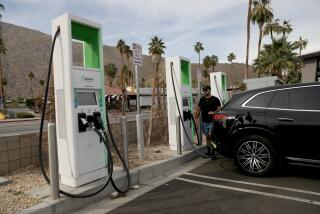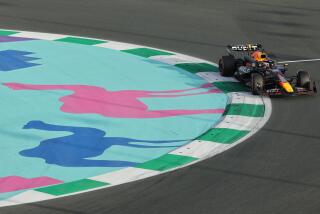Formula E racing opens a road to a world without oil
Remember not so long ago when hybrid and electric cars were all stumpy little vehicles with tiny wheels? Designers seemed to be saying, “If you hate cars, hug trees and feel guilty about not being on a city bus, this is the vehicle for you!”
If those early attempts to steer away from gasoline-powered automobiles had to be small in size, why couldn’t they at least look as frisky as a Miata? Why did they have to look like potatoes on wheels? Well, things have changed. Auto manufacturers are offering a wide array of choices, from the Toyota Prius and Nissan Leaf that still have a bit of that chubby eco-friendly look, to the BMW i8 and Porsche Panamera that are the farthest thing from frumpy. The king of them all, right now, is the Tesla Model S that keeps topping every competitor in Consumer Reports rankings.
Still, no matter how cool some of the newest alternative-power vehicles look and no matter how advanced their technology, the market for hybrids and electrics remains narrow. Low gas prices have kept most people from seeing any economic advantage to switching from internal combustion engines. The ultra-luxury price of the Teslas and BMWs also limits the number of buyers. And, with visions of long, cross-country road trips locked in the American imagination, even those who commute only a few miles a day are worried the limited range of electrics will cramp their style.
Change is coming down the road, though, and, if you were in Long Beach, Calif., on Saturday, you could have heard what that change sounds like.
Imagine the shriek of a flock of birds overlaid with a referee’s whistle. That is the sound of a Formula E race car tearing by and careening into a hairpin turn. Yes, the assumption is that electric cars are nearly silent, but not when they are traveling at 140 miles an hour with 20 of them jockeying for advantage in a 39-lap race.
This is the first season of racing for the all-electric version of the fabled Formula 1 race cars. The competition on the streets of Long Beach was the sixth in a 10-race series that began in Beijing in September and ends in London in June. When the all-electric circuit was first proposed, many people in the Formula 1 world considered it a dumb idea. Formula 1, after all, has a certain mystique. It is the playground of daring drivers with movie-star looks, sleek super models in six-inch Jimmy Choo heels and European aristocrats with champagne chilling in their private tents by the race course. Creating an alternative version of the race without gas fumes and the deep roar of massive engines and with distances limited by the charge of a battery seemed about as glamorous as building a school science project.
But some of the big names of Formula 1 got engaged; the Andretti family as team owners and, as drivers, several young men who are following in the footsteps of champion fathers -- a Senna, a Piquet, a Prost and an Andretti among them. So far, the Formula E experience has pleased the crowds. Packed with excitement, the race in Long Beach with its screaming state-of-the-art cars and new generation of drivers felt like a fresh start for an old sport that could explode in popularity among auto racing enthusiasts.
This year, the circuit’s 10 teams are all driving duplicate cars supplied by Renault. Next year, the rules will loosen, allowing each team to tune and tweak their power systems. When that happens, things will get interesting, not just for the sport, but for all of us.
Competitive auto racing has always played a significant role in the advancement of motoring technology. Formula E will expand the development of electric vehicles outside the legacy auto manufacturers in Detroit, Munich and Tokyo with their burdens of tradition and market demands and will give a new source of inspiration to the brainy beehive of Tesla engineers in Palo Alto. The racing teams will be working aggressively on one big challenge: to go farther and faster on a battery charge.
That, of course, is exactly what the electric car industry needs and what consumers of the future will demand. As an alternative to fracking for ever-more-elusive sources of oil and the dumping of more CO2 into the atmosphere, the race to build a better electric car will not be just good sport, it could be a winner for the planet.
More to Read
A cure for the common opinion
Get thought-provoking perspectives with our weekly newsletter.
You may occasionally receive promotional content from the Los Angeles Times.










